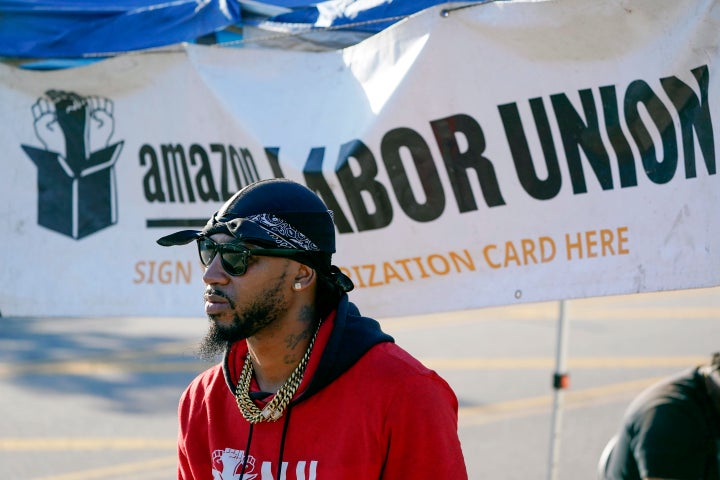After recently forming the first union at an Amazon warehouse in the U.S., the new Amazon Labor Union suffered a setback Monday by losing an election at a different facility on Staten Island.
In a ballot count held by the National Labor Relations Board, workers at the Amazon sorting facility known as LDJ5 rejected unionizing by a count of 618-380. The labor board has not yet certified the results to make them official, and the union may challenge them.
The Staten Island warehouse known as JFK8, which employs 8,000 people, was the first Amazon facility in the U.S. to unionize, when workers voted 2,654 to 2,131 in favor of forming a union in late March.
The smaller LDJ5 facility employs about 1,500 workers. Had they delivered another victory for the Amazon Labor Union, it could have added fuel to one of the most closely watched organizing campaigns in generations.

Kelly Nantel, an Amazon spokesperson, said in a statement the company was “glad” that workers were able to “have their voices heard.”
“We look forward to continuing to work directly together as we strive to make every day better for our employees,” Nantel said.
Seth Goldstein, a lawyer who’s been advising the Amazon Labor Union, told HuffPost the union was “evaluating our options” as it relates to challenging the election results based on Amazon’s conduct. It would have until May 9 to do so.
Goldstein said the results were not a major setback, and predicted there would be more elections to come.
“They’re going to win and they’re going to lose,” he said of pro-union workers. “It’s not going to stop the organizing.”
Amazon has aggressively fought union efforts at all its warehouses. The company deployed managers and outside anti-union consultants to hold group meetings and one-on-one conversations with workers, urging them to vote against the union. The company spent roughly $4.3 million on such consultants last year.
The union has accused Amazon of breaking labor law by retaliating against pro-union workers and making threats. The NLRB’s general counsel has found merit in some of the union’s allegations.
The union may file a challenge to the results at LDJ5, alleging Amazon illegally swayed the vote. Labor board officials found that Amazon had done so during a different union election in Alabama last year, ordering a do-over vote that was conducted there in March. The results in that election are still unclear due to ballots that have been challenged.
Amazon has accused the Amazon Labor Union of interfering in the vote at JFK8, asking the labor board to set aside the union’s victory there. The labor board still needs to investigate Amazon’s claims related to that election.
The new Amazon Labor Union was co-founded by Christian Smalls, a former Amazon employee whom the company fired after he led a walkout over safety concerns early in the pandemic. Smalls and his fellow organizers built a strong committee inside the JFK8 warehouse to combat Amazon’s anti-union message and embolden pro-union coworkers.
Following the vote count Monday, Smalls took to Twitter and told supporters not to be discouraged with the results at LDJ5. He said it was a harder facility to organize than the warehouse where the union had won:
The election win at JFK8 shocked the labor movement because the Amazon Labor Union did not exist until last year and generally doesn’t have the resources of an established union.
Along with the organizing success at Starbucks, the union’s earlier win has helped kindle hopes of a labor resurgence after decades of declining union membership rates. Right now just 1 in 10 workers belongs to a union, compared with double that rate in the early 1980s. Union density is particularly low in the private sector, where just 6.1% of workers are union members.

